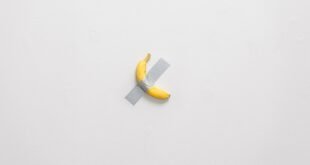
For six decades, Alice Neel rendered intimate depictions of strangers, lovers, and friends, capturing fleeting moments, moods, and personalities in her beloved expressionistic paintings. Now through October, visitors to the Orange County Museum of Art (OCMA) can become acquainted with a lesser-known subject of Neel’s paintings: pets. Amidst a total of 40 works, Alice Neel: Feels Like Home showcases five paintings of cats, dogs, and one parrot, all of which Neel portrayed with her characteristic familiarity and attention to individuality.
“It’s something that really struck me when I started doing more research and looking at the work,” OCMA’s Chief Curator Courtenay Finn told Hyperallergic. “They are characters and personalities in their own right along with the people, which I think is kind of incredible.” Neel’s pet paintings have taken center stage before: In 2014, London’s Victoria Miro Gallery presented a show titled Alice Neel: My Animals and Other Family. Kirsty Bell wrote a short book on the subject to accompany the exhibition.

Finn has been working on the show, which explores ideas of home and belonging, for the past year. One might derive those feelings from a person, such as a sibling or friend, or a place, such as New York City, Finn explained. (The exhibition includes scenes of daily life in the Big Apple, where Neel lived for 60 years before she died in 1984.) The sense of belonging may also come from a pet, the curator added.
Finn placed all five pet portraits in the first of the exhibition’s four galleries. “The idea was that when you go to someone’s home, if they have a pet, that’s often who greets you first — the cat or the dog,” she said.
Finn pointed to one of her favorite works in the show, a 1967 painting titled “Julia and Aristotle.” Julia, a frequent subject in Neel’s work, was the girlfriend and later wife of her son Hartley’s best friend from college. Finn described Julia’s look as “a side eye.”
“And then her dog is looking up, like, ‘Sorry about my human,’” Finn noted. “He looks more welcoming, but also kind of worried. And he’s right there by her side.” When Neel made the work, Julia was in her 20s and newly pregnant; this life event may be reflected in Julia’s apprehensive facial expression.


Finn thinks that Aristotle, appearing protective and a bit worried, also knows Julia is pregnant. “There’s something nice when you think of how animals are able to sense something about humans and the body that maybe we’re not even aware of,” said Finn. “They’re our friends and our protectors.”
Neel owned many pets throughout her lifetime, including a series of cats and dogs who came and went throughout her long life. Family albums show her reclining on a sofa with a kitten on her lap and posing with what looks to be a German Shepherd; in the latter picture, the dog is sitting in front of Neel, appearing much larger than her and holding a dignified gaze. Neel’s children and grandchildren later loved pets of their own, also recorded in a slew of photographs held by The Estate of Alice Neel.

Finn pointed out another one of her favorites in the exhibition, “Ginny and the Parrot” (1970) — a vibrant depiction of Henry Miller, the bright green bird of Hartley and his wife Ginny. The pair even brought Henry to their wedding. Ginny folds one leg over the other as she holds out her arm out as a perch for the parrot, which looks ahead with what can only be interpreted as a smile. Ginny, hunched over, seems to prioritize the needs of Henry Miller, choosing to give the bird a comfortable resting spot rather than sit upright herself.

Owner-pet dynamics shine through again in “Victoria and the Cat” (1980), a later painting that portrays Neel’s granddaughter.
“She’s holding the cat in this really awkward pose that only kids can get away with with their pets: The cat looks sort of bemused but also really comfortable,” said Finn.
Finn recalled a 1950 photograph of Hartley holding a kitten that showcases the same emblematic relationship children have with animals conveyed in “Victoria and the Cat,” rendered 30 years and a generation after the black-and-white photo was taken. The two cats share a distinct expression of comfortable annoyance. In “Hartley with Cat” (1969), another work on view in Feels Like Home, Neel’s son has grown from a boy to a young man. In both sittings, Hartley draws the animal close to his chest and almost hides behind it, giving the sense that perhaps he has not grown up that much at all.
“The thing that’s really nice about Neel’s work is that children and animals are rendered with such attention to detail and personality as the adult figures,” said Finn. “They aren’t props to say something larger about the adults: They’re characters in their own right.”


Source link

